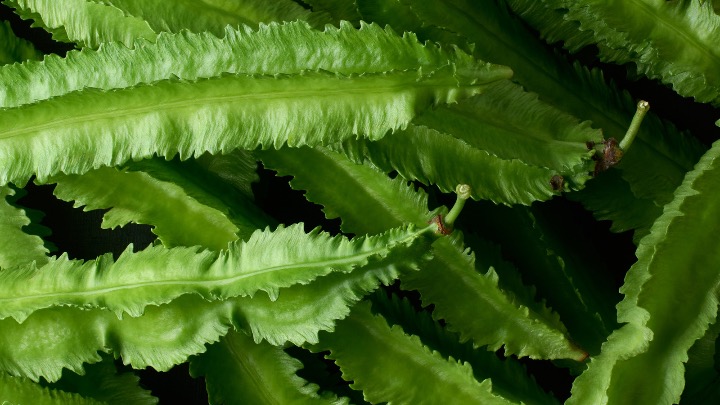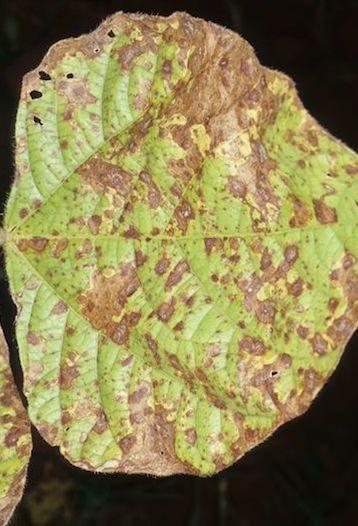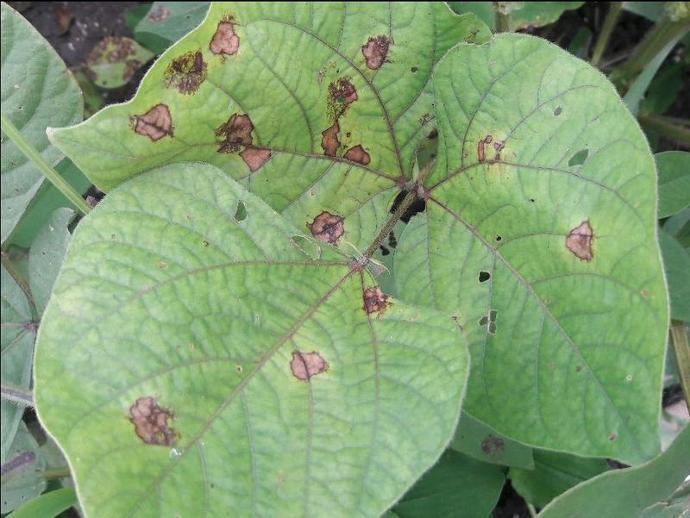Winged Bean Plant
Winged bean, a perennial, grows in well-drained loamy soil and full sun. It's frost-sensitive and benefits from regular watering.
Habit
Perennial
Height
3 to 4 m
Growth
Fast
Soil
Well-drained, Loamy
Shade
Full Sun
Moisture
Moist
Edible
Yes
Medicinal
No
Origin
Southeast Asia
Climatic Condition
Tropical, Subtropical
Temperature (°)
20°C to 30°C
Humidity (%)
60% to 80%
Potting media
50% Loam, 40% Sand, 10% Organic Matter
Fertilizers
Organic Fertilizer
Watering
Regular watering
Plant Weight
2 to 4 kg
Flowering Time
Summer to Fall
Soil Ph level
6.0 to 7.5
Water Ph level
6.0 to 7.0
Soil EC
0.6 to 1.0 mS/cm
Yield Per Plant
15 to 20 kg per plant
NPK ratio
10:10:10
life Span
2 to 5 years
Health Benefits
High in Protein, Nitrogen Fixing
Suggested Grow Media or Potting Mix ?
50% loamy soil, 30% compost, 20% sand
Suggested Fertigation/Fertilizers
Fertilize every 2 weeks with a balanced fertilizer.
Common Diseases and Remedies
Cercospora leaf spot .
Dark brown spots on leaves .
Prune out older leaves .
HEALTH BENEFITS
· High in protein, making it great for muscle building
· Contains calcium, phosphorus, and iron, supporting bone health
· Rich in vitamin A, benefiting skin and eye health
· Good source of dietary fiber, aiding digestion
Seeds contain healthy fats, which help maintain cholesterol balance
What Is An Winged bean Tree?
The winged bean, logically known as Psophocarpus tetragonolobus, is a tropical vegetable plant esteemed for its palatable cases, leaves, blossoms, and tuberous roots. Starting from New Guinea, this plant flourishes in warm, sticky environments and is appropriate for development in different horticultural frameworks. Winged bean plants are climbers, frequently arriving at lengths of 3-4 meters, with plants that have four calculated stems, it its unmistakable "winged" appearance to give the plant. The leaves are trifoliate, meaning they have three handouts, and the blossoms are appealing, changing in variety from white to blue or purple.
What Are The Different Types Of Winged bean Plants?
There is for the most part just a single types of winged bean plant, which is Psophocarpus tetragonolobus. Notwithstanding, inside this species, there can be some variety as far as unit tone, bloom tone, and development propensities. A few cultivars might have different case shapes or tones, like green, purple, or red units. Also, there might be varieties in plant size and power.
While there is definitely not a great many unmistakable sorts of winged bean plants like there are for certain different harvests, there can in any case be some variety inside the species in light of explicit cultivars or local varieties. These distinctions might be more articulated in districts where the plant has been developed for quite a while and where nearby ranchers have chosen for explicit characteristics over ages.
How to Care Winged bean Plant ?
1. Location
Winged beans flourish in warm, sticky environments and are ordinarily filled in tropical and subtropical locales. They require a base temperature of around 20°C (68°F) for ideal development and are delicate to ice. As far as unambiguous areas, they are ordinarily developed in pieces of Southeast Asia, including Indonesia, Malaysia, the Philippines, and Thailand. They additionally fill well in other tropical areas like pieces of Africa, India, and South America.
2. Sunshine
Winged bean plants require a lot of daylight to flourish. They ought to be filled in an area that gets full sun, and that implies no less than 6-8 hours of direct daylight each day. Inadequate daylight can prompt leggy development and unfortunate case advancement. Whenever filled in an area with a lot of shade, the plants might battle to create a decent harvest.
3. soil
Winged beans fill best in all around depleted, sandy topsoil soil that is wealthy in natural matter. The dirt ought to have a pH level somewhere in the range of 6.0 and 7.0, which is marginally acidic to impartial.
4. Hydration
Mulching around the foundation of the plants can assist with holding soil dampness and decrease the recurrence of watering. Moreover, giving a lattice or other help for the plants can assist with diminishing water weight on the plants by further developing air dissemination and lessening contest for water from adjoining plants.
5. Nourishment
Prior to planting, integrate very much spoiled fertilizer or matured compost into the dirt to further develop ripeness. During the developing season, you can apply a decent compost or one that is higher in nitrogen to advance leaf and plant development.
On the off chance that you notice yellowing leaves or slow development, it might demonstrate a lack of supplement. In such cases, you can side-dress the plants with a nitrogen-rich compost or apply a foliar shower of weakened fluid manure to give a fast supplement support.
6.Issues
Aphids, caterpillars, and leafhoppers can in some cases feed on winged bean plants, harming the foliage and diminishing plant force. Standard review and the utilization of insecticidal cleanser or neem oil can assist with controlling these nuisances.
What are the Benefits of Winged bean Plant ?
1. *Nutritional value*: Winged beans are wealthy in protein, with the seeds containing around 30-40% protein by weight. They likewise contain fundamental amino acids, nutrients, (for example, vitamin An and L-ascorbic acid), and minerals (like iron and calcium), making them a nutritious food source.
2. *Versatility*: All pieces of the winged bean plant are eatable, including the cases, leaves, blossoms, and tuberous roots. This flexibility considers various purposes in cooking, giving various flavors and surfaces.
FAQs About Growing winged Bean
1. how to keep up with winged been plant ?
Give customary watering, particularly during dry periods, to keep the dirt reliably soggy yet not waterlogged. Water profoundly to support profound root development.
2. what are the purposes of winged bean plant ?
Often called the triangle palm, it gets its name from its triangular appearance. One can trace this palm’s lineage back to Madagascar, where it was found flourishing with enchanting beauty. Unlike the standard variety, this palm grows old with a single trunk from which branches triangular foliage shaded green to blue.
3. can I grow winged bean plant indoor?
While it's possible to grow winged bean plants indoors, it can be challenging due to their size and climbing nature. Winged beans are vigorous climbers that can reach lengths of 3-4 meters, so you'll need a trellis or other support structure for them to climb.
4. which pot is best for growing winged bean plant ?
For growing winged bean plants in pots, it's best to choose a large container that can accommodate the plant's vigorous growth and climbing habit. A pot with a minimum diameter of 18 inches (45 cm) and a depth of at least 12 inches (30 cm) is recommended to provide enough room for the plant to grow.
5. from where can I shop winged bean plant ?
You can shop for winged bean seeds or seedlings from various sources, including local nurseries, garden centers, agricultural stores, and online seed suppliers.

